Text
How ideological differences lead to the Berlin wall
Following WWII, tensions between the USSR and the Western allies (USA, Britain, and France) rose due to the fundamental differences in Communism and Capitalism. This division became known as the Iron Curtain following Winston Churchill’s speech in 1936 in which he said that due to the tensions between the two sides (Capitalist West and Communist East), "iron curtain" has descended across the continent. The Berlin wall became the infamous physical symbol of the deep divide and oppression under the Communist regime in Eastern Europe, but why was it built and why did it fall?
International relations: historical context of Russia and the West
Russia and the West – America and Britain- have had a pretty complicated relationship for a very long time, and this section aims to give the modern historical background of it (1917 up to 1945).
Russia joined WWI in 1914, one of its allies being Britain. The was crippled Russia’s economy: over 17 million farmers were conscripted into the army meaning there were food shortages; factories that didn’t directly contribute to the war effort by making weapons or equipment suffered from under supplying and many had to shut down, leading to further unemployment; and to top it all off the Tsar at the time- Nicholas II -took a personal control of the army despite having no military experience. By 1917, the Russian population was desperate to leave the war, having already lost about 40 million men.
As discontent with the Tsarist regime and continuation in the war grew, support for Lenin and the Bolshevik party also grew. Sure enough, when they came to power in 1917, they issued the Peace Decree which promised an end to the war. After signing the Treaty of Brest- Litovsk in March 1918 (which had deeply detrimental terms for Russia, such as losing 50% of its industry), Russia was out of the war. By abandoning their allies, Russia made the West think communists could not be trusted.
In the years following this, Russia went into civil war. The war was mostly between the Reds (Bolsheviks) and Whites (Mensheviks and other anti-Bolsheviks). The western capitalist countries supported the Whites financially and by sending troops, and although the reason for this wasn’t necessarily because they wanted the Whites to win, but because they didn’t want the Bolsheviks to win, the Reds used the foreign interventions in their anti- white propaganda.

After the Bolsheviks fully established their rule, the western capitalist countries were always seen as enemies that had gone against them in the past and were ready to intervene in national issues if it meant preventing the establishment of communism.
During WWII, USSR, Britain and the United States put aside their ideological differences in order to unite in defeating Nazi Germany. Russia has joined the western allies after in 1941 Hitler broke a non- aggression pact with Stalin by invading the USSR.
Tehran, Yalta and Potsdam
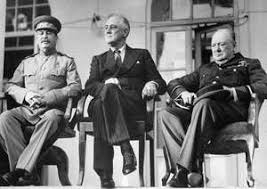
The Big Three, as they became known, met in Tehran, Iran in 1943. Stalin (leader of the USSR), Roosevelt (US president), and Churchill (UK prime minister) had the common aim of improving their relationship with one another and their countries. During that meeting they decided on the opening on the second front- which meant that Britain and America would now open a front at the west of Germany, so Russia doesn’t have to do all the fighting on the Eastern front. This was a turning point in defeating the Germans as it meant their army was now divided.
Although the conference was successful, it did highlight some tensions already: Churchill was very anti-communist and Britain had joined the World War on the 3rd of September 1939 after Poland was invaded by Germany; Stalin wanted complete control over Poland so he can create a ‘buffer zone’ (the countries between the capitalist west and Russia would have to be invaded before Russia would be, giving the Russians more time to react), and was also very distrustful of Britain and the US as he felt their purposely delayed opening the western front. Stalin thought that they had waited so long so Russia would be weakened after fighting Germany for so long, and once the western front was opened, Britain and America could invade Germany and get to Russia next. The reason Stalin was so worried about getting invaded from Germany is because it happened twice already: in 1914 and then again in 1941 when Hitler broke the non-aggression pact he had made with Stalin.

Potsdam conference 1945
The Big Three then had a second meeting- Potsdam February 1945. At this point it was obvious that Germany was going to lose, so the plans surrounded what happens after that point. Among other things, a decision was made that the USSR would have a sphere of influence in Eastern Europe- although exactly what that entails differs depending on which side you asked. The most relevant, in relation to the future of Berlin, decision they made at this conference was to divide Germany in 4 sections following the war. Britain, France, America and Russia would all get one section. Despite being entirely in the Eastern side of Germany, the capital city of Berlin was also divided in this way- with the west 3 sections belonging to the western allies and the east one to the USSR.
Potsdam was the final conference, attended by Stalin, Harry Truman and Clement Atlee. President Roosevelt had died and been replaced by Truman, who was more anti-communist; Churchill had lost the general election and been replaced by Atlee. Despite the shift in leaders, the decision about splitting Germany and Berlin into four was confirmed. After 1933 there had been no free elections in Germany and the Big Three had decided to re-establish them along with democracy, freedom of speech and freedom of press. The Nazi party was banned, and Nazi war criminals were tried. Russia would receive reparations on the form of goods from the Western sectors.
The Berlin Blockade 1948-1949 and establishing of two separate countries
Having been invaded by it twice in the past, Russia wanted to keep Germany to prevent any future threat. The Allies (Britain, France and America) wanted to make it independent and prosperous so they don’t have to keep paying for it, and so they can build trade with Germany. This disagreement was bound to cause conflict.
In 1947, Britain and America joined their sectors to form Bizonia, and due to the very good relations with the French zones, they united with them too forming Trizonia. In Trizonia they decided to introduce a new, trustworthy currency called the Deutsche Mark which was essential if they wanted to rebuild the German economy. This worried Stalin and he retaliated by introducing the Ost Mark in the eastern sectors.
The western sectors of Germany and Berlin were accepting Marshall Aid (American support to help countries rebuild themselves after the war), while the eastern sectors, and eastern Europe apart from Yugoslavia) did not, which deepened the divide between the east and west even more due to their economical states and standards of living.
As Stalin feared western capitalist ideas and currency entering the eastern part of Germany or Berlin, he cut off all rail, road and canal links. This was with the aim that the west would be forced to give up on western Berlin as they wouldn’t be able to get any supplies to their people.
However, Truman saw this was a testing case – he wanted to prove to Stalin that we would not give up and he would maintain his policy of containment (stopping the spread of communism). The allies, the US in particular, started the Berlin airlift to supply western Berliners with necessities. The airlift code-named “operation vittles” had its first flight on the 26th of June 1948 and lasted until 30th September 1949 – even though the blockade was lifted in May of the same year.

The airlift was incredibly successful as both achieving its aim of supplying the citizens- for example on the 16th of April 1949, 1400 flights brought in 13k tons of supplies, even though the necessary amount needed for the western Berliners to over was 6k tons a day- but also at showing the USSR they wouldn’t give up on their citizens. Truman wanted western Berlin to be a symbol of freedom behind the iron curtain.
Straight after the Berlin blockade was lifted, the western sectors officially united as one country – The Federal Republic of Germany. In October of 1949, the eastern part of Germany became the German Democratic Republic (ironically enough).
The wall goes up
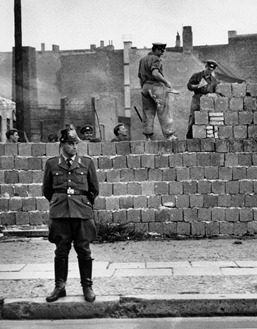
East and West Berlin had been very different. The west was extremely prosperous thanks to the allies investing in it, whereas the East was poor and had low living standards. This resulted in immigration from the East to the West- with over 3.5 million East Germans emigrating to West Germany before 1961, which comprised most of the total net emigration of 4.0 million emigrants from all of Central and Eastern Europe between 1950 and 1959.
On 13th of August 1961, the communist government of the German Democratic Republic started putting up barbed wire fences along the border of West and East Berlin. It was quickly replaced by a concrete one and through the years,more and more was added to it such as watch towers. The 27-mile portion of the barrier separating Berlin into east and west consisted of two concrete walls between which was a “death strip” up to 160 yards wide that contained hundreds of watchtowers, miles of anti-vehicle trenches, guard dog runs, floodlights and trip-wire machine guns.
Hundreds of people tried to go into West Berlin and hundreds died trying to do so. Amongs the people who escaped successfully are the three Bethke brothers, whose escapes are like from an action movie. The oldest of the three, Ingo, escaped by floating on an inflatable mattress across the Elbe River in 1975. Then in 1983, the middle brother, Holger soared over the wall on a steel cable he fired with a bow and arrow to a rooftop in West Berlin. Six years later, they both flew an ultra-light plane over the wall and back to pick up their youngest brother Egbert.
The American view of the wall is nicely summarized by my President Kennedy in 1961: “It’s not a very nice solution, but a wall is a hell of a lot better than a war. This is the end of the Berlin crisis. The other side panicked—not we. We’re going to do nothing now because there is no alternative except war”. The wall was used to show how bad communism is- they had to build a wall to keep people from leaving, which gave it a similar image to a prison. It became a symbol of the division in Berlin, and in Europe at the time.
Accidental freedom
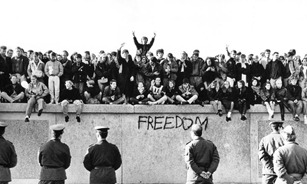
Although it came after years of discontent and protests, the fall of the Berlin wall was accidental. East Germany had decided that its citizens can emigrate for a short period of time, after having gone through a lengthy visa process.

Then on the 9th of November 1989, a press conference took place at which East German politburo member Günter Schabowski prematurely announced that restrictions on travel visas would be lifted. People attending started questioning him and when asked when this new policy would take power he responded with: “Immediately, without delay.”
His confused answers and the erroneous media reports that followed, sent a wave of people to the Berlin wall ready to cross it.
The chief officer on duty at Bornholmer Street checkpoint, overwhelmed by the thousands of people and by the insults rather than instructions he received from his superiors, opened the border crossing and the gates soon followed. The flood of East Berliners couldn’t be stopped by the officials.
The symbolism of the fall

For decades the wall symbolized the division ideologies can make. Because of the differences between capitalist and communist way of rule, and the difference in priorities and values they had, the people of Berlin were entirely separated. Eastern Berliners grew up being restricted and isolated while the West being prosperous and having opportunities. The fall of the wall symbolized the fall of the division, or at least to a point in which people weren’t physically restricted, or risked losing their life if they tried to escape.
#cold war#ussr#berlin wall#kennedy#berlin#east berlin#west berlin#bizonia#trizonia#history#historyblr#9th november 1989#communism#capitaliam#capitalism#ideological difference#history article#essay
2 notes
·
View notes
Text
LGBT History Month: A short history of a contemporary problem
Conversion therapy regards to physical or psychological therapy that aims to change an individual sexual orientation or gender identity. The practices often involve electroshock therapy leading to memory loss.
The modernity of conversion therapy despite all the proof against it is concerning. The issue has been brought to people's attention recently with films going our revolving around conversion therapy - for example Boy Erased.

American Horror Story season 2 features on of the the main characters going through it, and despite it being a horror show, its depiction of the practice really wasn't far fetched - in fact it was quite accurate. Their realistic portrayal of it actually made it quite hard to watch.

Lots of people have shared their stories about having been through conversion therapy to major media outlets and newspapers, bringing more attention to the issue.
One of the most surprising things to me while reading about this was the fact that even in England, where homosexuality, same-sex marriage and adoption are legal; transgender people are legally recognised; there are LGBT Pride parades all around the country; there are lots of LGBT campaigns; 45 openly LGBT MPs were elected into parliament - conversion therapy is still legal.
The Memorandum of Understanding on Conversion Therapy, a signed formal agreement, recognises the shared responsibility medical professionals have in opposing gay conversion therapy. Yet as the memorandum itself notes, a 2009 study found that one in six psychological therapists have engaged in efforts to help a client change their sexual orientation.
At least 698 000 Americans have undergone some form of conversion therapy. It also concluded that a further 20 000 LGBT youths will undergo conversion therapy by a licenced professional, and 57 000 by a religious leader.
Records of conversion therapy in America date back to the 1890s, when people believed homosexuality could be “cured” by surgery - often castration. In the beginning of the 20th century, psychotherapy became more prominent and that offered a different solution. Some medical professionals concluded that homosexuality was a developmental problem rather than a physical one. After the 1920s, the debates surrounding the causes of homosexuality continued and although people focused more of male homosexuality, they gradually recognised the existence of lesbians. However many, including Sigmund Freud, physician and the founder of psychoanalysis, believed there wasn't a cure for homosexuality. Freud actually believed that everyone is born bisexual and then due to their surroundings becomes either heterosexual or homosexual.
By WWII, the American government had taken explicit regulatory measures that linked heterosexuality to citizenship, thus ti the benefits that came with it such as access to welfare, government loans, ability to serve in the military. At the same time, legislations were passed which then formed sexualpsychopath laws. These often-targeted LGBT people and lead to them being sent to prison or mental institutions. The American Psychiatric Association officially defined homosexuality as a mental disorder in the first edition of the Diagnostic and Statistical Manual (DSM), published in 1952. As a good, lawful American citizen now had to be heterosexual, conversion therapy became more credible.
As the century progressed the state started forcing individuals who had been convicted of being homosexual to undergo conversion therapy. However, many did it voluntarily out of desperation to fit into the contemporary society or out of fear of the identity which would often cause people their relationship with their family and friends.
In the UK, the most common type of conversion therapy was aversion therapy. Patients would be electric shock treatment, hallucinogenic drugs and undergo brainwashing techniques. Men would often choose aversion therapy over prison sentences. They'd be shown pictures of naked men and then given a series of electroshocks and drugs to make them vomit. After they would be shown pictures of naked women or taken on a “date” with a young nurse. This is the type of therapy shown on American Horror Story season two.

Peter Price underwent aversion therapy when his mom found out he is gay when he was 18. He remembers being in a windowless room with an audio tape describing homosexuality “in the foulest language imaginable". He also described part of the treatment: “they then injected me with something that made me violently sick for about an hour and they left me there.”
Although the treatment's advocates claimed a success rate of 70%, it was obvious it was ineffective and damaging. After pressure from gay rights campaigners and the decriminalisation of homosexuality in 1967, aversion therapy decreased in popularity.
In July 2017, the government launched the National LGBT Survey and published the results earlier this year. Over 108,000 people participated, making it the largest national LGBT survey in the world to date. The survey focused on “experiences of LGBT people in the areas of safety, health, education and employment”. Some of the report's conclusions are:
• LGBT respondents are less satisfied with their life than the general UK population (rating satisfaction 6.5 on average out of 10 compared with 7.7). Trans respondents had particularly low scores (around 5.4 out of 10)
• Two percent of respondents had undergone conversion or reparative therapy in an attempt to ‘cure’ them of being LGBT, and a further 5% had been offered it
• Two percent doesn’t sound like a lot, but it equates to the number of students in our college- and that’s from a sample which is small compared to the UK population of 67 million. In perspective, if 2% of the UK population has undergone conversion therapy, then that equates to the percentage of the population aged over 85.
LGBT youths are, and always have been at a high risk of mental health problems such as depression and anxiety which has been supported by numerous reports and studies and being put through conversion therapy doesn’t help that.
According to a The Guardian article published in 2015 : “People who have gone through conversion therapy face 8.9 times the rates of suicide ideation, face depression at 5.9 times the rate of their peers”.
Today, organisations such as American Medical Association and the American Psychiatric Association agree that conversion therapy is ineffective and harmful for those who undergo it. On a legal level, 14 states have passed laws to ban the practice, and some municipalities have passed similar laws aimed at protecting LGBTQ youth. Last year, Theresa May vowed she would take steps to ban it, however the legal status of conversion therapy remains the same. Although obvious steps have been made in the direction of equality of LGBT people, the modern presence of conversion therapy

#conversion therapy#lgbt#lgbtq#history#historyblr#gayrights#aversion therapy#boy erased#troye sivan#american horror story season 2#ahs asylum#peter price#lgbt history#lgbt history month
7 notes
·
View notes
Text
Does Nazi Racial Thought have a Darwinian descent?
Darwinism is a theory of biological evolution developed by Charles Darwin and others, stating that all species of organisms arise and develop through the natural selection of small, inherited variations that increase the individual's ability to compete, survive, and reproduce. We are all familiar with it as it has been on the curriculum for decades – but did it inspire Hitler to pursue his racial policies?

A less widely known follow up theory is Social Darwinism. Despite its name, Social Darwinism derived most directly from the writings of Herbert Spencer. He created the idea of the struggle for survival – suggesting that it led to an inevitable progress in society. This broadly meant evolving from the barbarian stage of society (less culturally developed) to the industrial stage (by which humans had evolved enough intellectually to be able to create industrial states).
It was the start of a belief that some races were a lot more ‘developed’ that others, which is a key aspect of racist beliefs in general.
Spencer also coined the term “survival of the fittest”. He was responsible for much of the foundations of Social Darwinism, however Charles Darwin did state that human progress was driven by evolutionary processes – meaning that intelligence was refined by competition.

Historical opinion on whether or not Darwinism played through in Nazi Racial thought varies a lot. Historian George Mosse argues that human evolution was incompatible with Nazi ideology, as they stressed the immutability of the German race. Anne Harrington suggests that Nazis liked some aspects of Social Darwinism, especially the struggle for existence, but not human evolution.
Most people would think the idea of a common ancestor did not appeal to Nazis, as it would imply human equality, however in the 20th century, most German Darwinists emphasized the inequality and variation. Haeckel and other Darwinists saw evolution as evidence against human equality, not supporting it.
Mein Kampf

In 1925, Hitler’s autobiography, Mein Kampf (My Struggle) was published. According to the introduction, the aim of the book is to explain his philosophy and his goals. Race superiority is a large theme in the book. In his speeches and writings Hitler often invoked Darwinian concepts, such as evolution. In one of the chapters, “Race and People”, evolution plays a central role in his argument. Furthermore, that is the only chapter which was also separately published as a pamphlet, which meant it circulated widely and promoted Nazi ideology.
In the chapter, Hitler explains his beliefs surrounding that he calls “iron laws of nature”. He was very against the mixing of races, as he thought that would go against the natural process of human evolution:
“If nature does not wish that weaker individuals should mate with the stronger, she wishes even less that a superior race should intermingle with an inferior one; because in such case, all her efforts throughout hundreds of thousands of years, to establish an evolutionary higher stage of being, may thus be rendered futile.”
He goes into giving examples of places where racial and cultural mixing has occurred on a large scale and places where it hasn’t, in order to show the difference, and what he considered the preserving of a “pure” racial stock. Hitler gives North America as an example of where (at the time) there wasn’t large scale racial mixing.
“…has kept its racial stock pure and did not mix it with any other racial stock, has come to dominate the American Continent and will remain master of it as long as that element (North American) does not fall a victim to the habit of adulterating its blood.
In short, the results of miscegenation are always the following:
a) The level of the superior race becomes lowered;
b) Physical and mental degeneration sets in, thus leading slowly but steadily towards a progressive drying up of the vital sap.”
These beliefs may seem quite extreme to people today, but at the time they were a very common value. To give some historical context, Mein Kampf was published in 1925, which coincided with the Great Migration period (1910 -1920). In those years thousands of African Americans moved into industrial cities in America to full the labour shortages after World War One.
This, quite sudden, change in the racial proportions that made up the Northern cities increased racial tension. Segregation was legally enforced, and inter-racial marriages were illegal – which explains the lack of miscegenation. There was also a wide spread belief of White Supremacy – which is very prominently shown by the KKK which was actually at its peak in 1925. Kathleen M. Blee. a sociology professor at the University of Pittsburgh states: "In some places I studied in Indiana," she says, "the local KKK was listed in the city directory, along with sewing clubs and agricultural societies."
The point of the passage focusing on evolution in this chapter of Mein Kampf is to apply these principles to human racial relations. Thus, making it apparent that Hitler had evolved but were also still evolving, and through his racial policy he aimed to advance human evolution.
As well as the Aryan race, Hitler also seemed to be a fan of the Nordic race - mostly found in Scandinavia, Northwestern Europe, and countries surrounding the Baltic Sea, such as Germans and Finnic peoples. He believed the Nordic race had developed its key traits such as propensity for hard work, physical prowess, due to the harsh climate. The reason being that in a harsh climate only the most adaptable, strong, most cooperative individuals would survive to pass on their traits.
Darwinism in the Nazi Biology Curriculum
Like the majority of Europe, evolutionary biology had been entrenched in the curriculum long before the Nazi take over and continues to be long after their fall from power. Nazis continued to stress evolution, including the evolution of human races. Textbooks espoused Darwinism and rejected Lamarckism (the hypothesis that an organism can pass on characteristics that it has acquired through use or disuse during its lifetime to its offspring).

The picture above is of a race education class, 1943.
So, to what extend was Darwinism the inspiration of Nazi Racial thinking?
It is important to note that anti-Semitism was widespread across Europe and Asia and pre-dates the Nazi regime, and so does racism. An example being the large-scale pogroms across the Russian Empire targeting Jews, which started in the beginning of the 19th century. The most commonly known example or racism is the slave trade, also pre-dating the Nazi regime. As prejudice is a deeply rooted issue in human nature it is very hard to pin one event or theory as the cause for another. Thus, it is very hard to pin down the inspiration to the Nazi racial policy as it had many factors varying from geographical location, to genetics, to involvement in the war, and religion.
However, it is clear through Hitler’s entrenched belief of the, to him, direct link between human evolution and racial superiority, that Darwinism does play a fairly significant role in his beliefs.
While doing research on this, I didn’t find anyone addressing the fact that Hitler could have just been using Darwinism to explain his beliefs as by then it was a largely accepted theory. Giving a theory that leading scientists supported as the basis of Aryan racial superiority would make his beliefs more credible, as opposed to basing them purely off of personal experience or just the common discontent with foreigners, Jews or just different races. Although humans tend to build their beliefs from personal beliefs and emotions, when someone, especially a politician is putting forward an argument which they want to be popularly supported, they do need facts to back it up.
This is exactly what arguments on racial superiority lack. Throughout history, including today, we do see lots of people from all races believing theirs is the best. People tend to have a certain amount of pride in where they’re from – whether it be a region or country- and while this isn’t inherently wrong in my opinion (excluding extreme cases or violent expressions of such beliefs) it just proves how subjective these beliefs are. Therefore, if someone was trying to convince a whole nation that one race is superior to the other, to the point where the supposedly inferior one has to be eliminated, they would really need some scientific, economic, political etc., figures and facts that they base it on.
Hitler uses well known and current examples when justifying his belief on the mixing of races and keeping the races “pure”, which on one hand could just be seen as the logical thing to use when presenting an argument as current issues are the most relevant. However, on the hand, using very current examples, which are kind of common knowledge, could be seen as a tactic to target a wider variety of people, some of whom wouldn’t be as informed of the reasoning behind the mentioned examples, this making it easier to pursue them the reason is simpler.
So, to give a short answer to an issue on which there is no major agreement on, a need for a public support may or may not have been the reasoning behind Hitler basing Nazi racial policy on Darwin’s theory of human evolution.
1 note
·
View note
Text
The Zheltoksan uprising: Kazakhs’ attempt to make their voices heard despite the Soviet leadership being unprepared to listen

The spark of the demonstrations of 17th-18th December 1986 was the bureaucratic reshuffle - the replacement of leadership of the Kazakh Soviet Socialist Republic (one of the fifteen ostensibly autonomous republics of which the USSR consisted of). Said change seemed like a straightforward one as it would replace one Soviet apparatchik with another, which had been a part of Mikhail Gorbachev’s attempt to drive out entrenched local leaders. The problem stemmed deeper than the replacement of the leader itself.
Dinmukhamed Kunayev had been the country’s communist leader for over two decades and was about to be replaced by Gennadiy Kolbin, a former regional party boss in Soviet Russia. It reinforced the feeling that the Soviets’ view of Kazakhs was as second-class citizens, unfit to rule the country themselves. This is confirmed by Dos Kushim, a lecturer at the time, who describes the situations as such: “for years this discontent had been accumulating inside us, that we’d become second-rate. The affront had been building up in our souls”.
By the 1980s, parts of Kazakhstan had been under Russian colonial rule for 250 years, which in turn brought a flood of settlers. According to Kazakh historians, in the short period of time between 1907 and 1912, 2.4 million people had arrived from Russia. By 1917, the time of the Russian Revolution, 45 million hectares of the best agricultural land had been granted to Slavic settlers. The growing resentment resulted in a violent outbreak in which Central Asian Muslims attacked settlers during a rebellion against a tsarist conscription order during WWI.
The 1930s and 1940s had an extremely negative impact across the Soviet Union as they were years of famine, Terror and war. The effects were felt by the Kazakhs the most. Within the space of a decade, they became a minority in a land that they had populated for centuries.
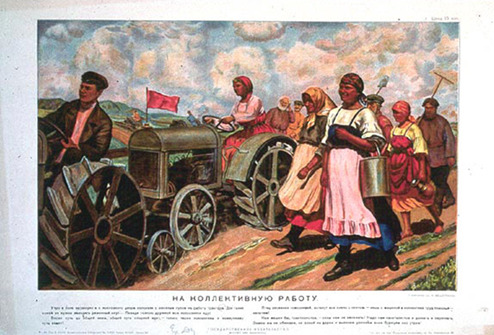
In the early 1930s, the famine began, and Stalin made an order of collectivisation of agriculture. Ukraine and Russia were the so called ‘breadbasket of the USSR’ which is where grain was requisitioned from; in Kazakhstan meat was requisitioned.
As Stalin scrapped the result of the 1937 census, it is unknown how many people died in the famine, from hunger and disease, during those years in Kazakhstan.
Moscow takes no responsibility for the communist- era atrocities, so for fear of antagonizing Moscow, Kazakhstan avoids blaming them. Instead they regard the famine as a collective strategy and remain a Russian ally. However, historians do believe that one of the aims of the famine was to wipe out the Kazakhs’ nomadic way of life and integrate them into the Soviet mainstream.
The shift in Kazakhstan’s demographics was deepened following mass deportation of people whose loyalty to Moscow was doubted. Large groups of people were sent to Siberia and Central Asia.
Siberia and Kazakhstan were where Moscow would relocate kulaks, a ‘richer’ class of peasants, as punishment for supposedly hoarding grain and therefore sabotaging collectivasation of agriculture.
In the mid-1950s, Nikita Khrushchev (Stalin’s successor) adopted an agricultural program, which aimed to plant grain in Kazakhstan. This in turn drew another 1.7 million Slavic settlers.
By 1939, Kazakhs formed 38% of the population- the decade before it had been 60%-, Russians and other Slavs made up 50%. By the time of the Zheltoksan protests, Kazakhstan was the only soviet republic in which the people after which it is named, are a minority.
Kazakh poet, Mukhtar Shakhanov was one of the many who feared the Kazakh language faced extinction. He remembers being told to speak a ‘comprehensible tongue’ while in public. Other protestors recall being berated on the streets for speaking a ‘monkey language’. To help build social cohesiveness, the soviet government would recite a mantra: ‘druzhba narodov’ meaning national friendship or ‘friendship of the peoples’.
By the mid-1980s the sense of alienation among Kazakhs increased the tensions. The news of Kunayev being replaces with Gennadiy Kolbin, a Russian, were spreading. A protestor- Gulbakhram Zhunis- explained that the Kazakhs were angered due to the fact that “he didn’t even know what kind of nation this was, our traditions and culture” the appointment of a person who unfamiliarised with the country, just further proved to the people that the soviets didn’t view them as fit to rule.
The replacement was a part of a broader reform adopted by Gorbachev (General-Secretary of the Communist Party of the USSR sin 1985). He launched his policies of perestroika- restructuring the economy- and glasnost – openness to new ideas and discussion. These policies opened up years of building up of resentments all across the UUSR, but most visibly in Kazakhstan.
Younger people thought that now is the time to make their voices be heard as Gorbachev seemed to soften the policies. This unusual sight of demonstrations and open criticism of the regime spread fear among the Soviet leadership, especially as demonstrations seemed to be spreading to other Kazakh towns. Having a traditional reaction, Moscow sent nearly 8 thousand armed police and paramilitary forces into Kazakhstan to disperse of the protestors. People were hurt as Brezhnev square where beatings took place. Two women died from interrogation facilities: ruled as suicides in the official reports. Of the 8500 people interrogated over the protests, 900 were convicted of crimes, including murder, and 82 were jailed. Mukhtar Shakhanov says hundreds of young people’s lives were “ruined forever”.
The Communist leadership engaged in a cover-up, including damage control. Although everyone knew there were casualties, this meant no one knew exactly how many. In 1987, Moscow based western journalist were invited to Kazakhstan and were told the official toll: 2 deaths and 200 injuries.
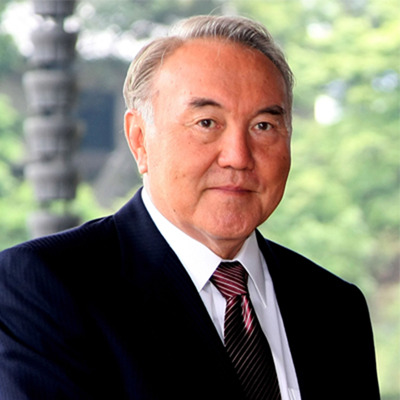
In 1989, Gorbachev appointed Nazarbayev (pictured above) to replace Kolbin as Kazakhstan’s leader. Two years later, Nazarbayev was elected the first president of an independent Kazakhstan, following the collapse of the UUSR in 1991. In the aftermath of the Zheltoksan protests, he criticized them, calling the protestors ‘hooligans’, but after the independence he presented himself as supporter who played an active role in the protests. Protestors recall him going into the crowds telling people to disperse. He became very ambiguous because of this.
In 1889, Shakhanov took the podium of the Congress of People’s Deputies, which was a new Soviet parliament instituted by Gorbachev in Moscow, and declared:” The words ‘Kazakh nationalism’ are an accusation against the entire Kazakh nation!”. He then demanded an open inquiry. Gorbachev was in present and he acquiesced.
The inquiry turned up interesting testimonies. A KGB officer said that the death toll had, in reality, been 168 (155 civilians and 13 law-enforcement officers) and not the two deaths the government had previously declared.
In modern day Kazakhstan, Zheltoksan is celebrated as a turning point of their country’s history, however many doubt the full truth about the events of that day haven’t come out yet. Nazarbayev remains the country’s president.
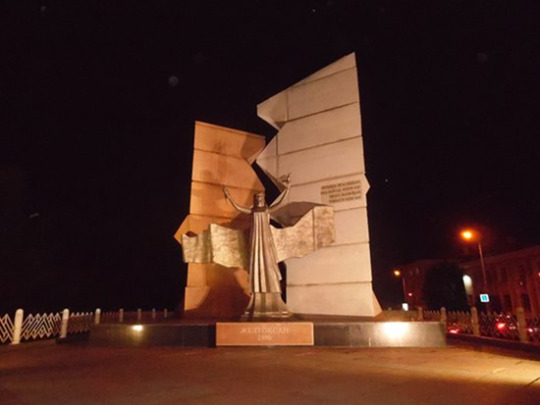
The Dawn of Liberty monument was built in 2018 to commemorate the 20th anniversary of the Zheltoksan.
#Zheltoksan uprising#zheltoksan#kazakhstan#gorbachev#mikhail gorbachev#nikita khrushchev#stalin#ussr#ussr history#kazakh history#history#nazarbayev#1968
2 notes
·
View notes
Text
Valentina Tereshkova: first woman in space

Valentina Tereshkova was born in a village near Volga River on March 6th, 1937. Following he father’s death in WWII, she left school at 16 and worked in a textile factory, but underwent correspondence courses, according to the Smithsonian Air and Space Museum.
Inspired by Yuri Gagarin’s accomplishment of being the first man in space, Valentina joined the Soviet space program. She lacked the experience as a pilot, but her 126 parachute jumps got her accepted- at the time cosmonauts had to parachute from their capsules before they hit the ground when returning to Earth.
Tereshkova received 18 months of training, including tests to see how she reacts to being alone for a long time, to extreme gravity conditions, to zero- gravity. Of the five women that received this training, only Tereshkova went into space.
She logged over 70 hours in space, making up to 48 orbits of Earth. An error in the spacecraft’s automatic navigation software caused the ship to move away from earth, but after Valentina spotted it, the Soviet scientists developed anew landing algorithm. Valentina landed safely.
Tereshkova was awarded the title Hero of the Soviet Union and received the Order of Lenin, as well as the Gold Star Medal. While being a spokesperson for the Soviet Union, she also received a United Nations Gold Medal of Peace.

Although Valentina never went back to space, despite being keen to, she remains active in the space community, being a test pilot and instructor and earned a doctorate in technical sciences.
#valentina tereshkova#Valentina#Tereshkova#Soviet Union#1963#cosmonaut#history#historyblr#yuri gagarin#252wordbiography
5 notes
·
View notes
Text
Nellie Bly: investigative journalist and record world traveller

Born Elizabeth Cochran, she later took the pen name Nellie Bly after the editor of Pittsburg Dispatch offered her a job as a columnist following reading Bly’s piece about the paper’s negative representation of women. Although she was a popular columnist, she was asked to write pieces addressing only women.
In 1886, Bly moved New York looking for a newspaper job that would allow her to do more serious pieces.
In 1887, Nellie Bly had her story on the immigrant experience in the US declined by the editor of New York World. She then accepted the editor’s challenge for her to investigate one Of New York’s most notorious mental hospitals, even taking it a bit further and going as a patient undercover to expose the treatment of patients.

She wrote about her time in the asylum on Blackwell’s Island. Ten Days in a Mad-House was published in a six-part series and made Bly one of the most famous journalists in the US. Her hands-on approach to stories developed into practice we now call investigative journalism.
After reading the book Around the World in 80 Days, she was inspired to do the same. She set a world record, although only held for a few months, as her trip took 72 days.
She married and retired from journalism. After her husband’s death in 1903, she was in control of the manufacturing company. Bly then patented several inventions related to oil manufacturing. Later on, she returned to journalism, covering woman suffrage movement and WWI.
#Nellie bly#journalism#investigative journalism#Around the World in 80 days#world record#pittsburg dispatch#1886#1887#72 days#ten days in a mad-house#elizabeth cochran#252wordbiography
2 notes
·
View notes
Text
Annie Edson Taylor: the first person to pass over the Niagara Falls and survive

A school teacher from Michigan, Ms. Taylor decided to attempt to pass over Niagara Falls in a barrel, accompanied by her cat.
Annie Edson Taylor thought she would attract a crowd as the Pan American Exposition was taking place in Buffalo, New York.

The barrel containing Annie Taylor and her cat was towed by a small boat on the afternoon of October 24th, 1901. Once the barrel was in the main stream of the Niagara River, it was cut loose.
At approximately 4:30pm the barrel was edging over the brink, and it then reappeared at the base of the falls less than a minute later. In fifteen minutes, the barrel reappeared near the shore and was dragged to a rock where the lid was removed.
People were surprised to see Annie Edson come out of the container with no injuries, although dazed, apart from a cut on her forehead which she got while coming out of the barrel.

On 24th October 1901, Edson’s 63rd birthday, she became the first person to pass over Niagara Falls and survive. Afterwards she said: “I would sooner walk up to the mouth of a cannon, knowing it was going to blow me to pieces than make another trip over the Fall.”
Annie died in 1921, and even though it got her the fame, she died broke, as she had feared.
Since then, 15 people have attempted the stunt, resulting in 5 deaths. Today, it is illegal, and the consequence of an attempt is a $25,000 fine.
0 notes
Text
20th Century: same day, different place
31st of January 1919
George Square, Scotland
The industrial unrest started before world war I, during which shipyards would employ thousands who despite working a 57-hour week, still lived in poverty. Such exploited workers became the base of radical politics and discontent. then the world was witnessing revolutions erupt in Russia and Germany, with long- established monarchies being overthrown.
With the rise of the Labor movement, and workers being aware of their collective bargaining power, they started demanding better pay and working conditions. Union leaders had hopes of a 38- hour working weeks, as it would also enable more people to be accommodated in the working force. This was needed as millions of soldiers were due to return home from the frontlines.
After a general strike crippled Glasgow’s industry, over 60k people took to the streets to protest for lowered working hours. James Phillips, Senior Lecturer in Social History at Glasgow University stated that "on one hand there was this big heavy exciting political atmosphere, but on the other hand, they were fairly basic demands for changes in working hours." And that the protests’ beginning was ‘peaceful’.
However, the government feared Glasgow being at the brink of a communist revolution, similar to the one in Russia 3 years prior, so they deployed tanks and English troops overnight. Once the police started pushing the protestors out of the Square, which had been chosen symbolically as it is a political center in the city, violent riots broke out. Union leaders Willie Gallacher and David Kirkwood were arrested and charged with incitement to riot. The protestors faced heavy- handed police baton, causing at least 53 deaths.
The event later became known as Bloody Friday.

The picture above shows David Kirkwood being arrested.
Paju, Estonia
The Soviets starting invading Estonia, so in early January 1919, the Estonian forces started a full-scale counterattack. Their main objective was to liberate north Estonia, including Narva. On the 14th of January, the Tartumaa Partisan Battalion, whose leader was Lt. Julius Kuperjanov, liberated Tartu. Then by the 17th of January they liberated north Estonia (and Narva).
It was of strategic importance for Soviet Russia to defend Valga, as the only working railway connection to Riga (captured by the Red Army on the 3rd of January) passed through it. To deal with this, along with other units, a large part of the elite Latvian Riflemen were sent to stop the Estonians. Finnish volunteers, The Sons of the North, supported the Estonian side.
It was necessary to capture Paju Manor in order to liberate Valga. After a short capture on the 30th of January, the Estonian partisans were pushed out. The soviet army was at a major advantage: they could rely on armored trains and cars for support, had 1200 men compared to Kuperjanov’s 300, and had more machine guns.

The battle of Paju was fought on the 31st of January during the Estonian War of Independence. The Tartu-Valga part of the Estonian army managed to push the Red Latvian Riflemen out of the Paju Manor after heavy fighting, which would define this batter as the most fierce in the early period of the war.
The Battle of Paju resulted in the liberation of Valga the following day. This mean that the Soviets’ railway supply line was cut off and they could not use armored trains.
To honor Julius Kuperjanov, who died due to heavy wounds two days after the battle, the Tatumaa Partisan Battalion was renamed Kuperjanov’s Partisan Battalion.

The battle is commemorated by a monument of a three- step pyramid of earth, which the Estonian President Lennart Meri reopened in 1994 to mark the 75th anniversary of the battle.
#history#historyblr#scottish history#labour movement#george square#bloody friday#glascow#glascow history#The Battle of Paju#Estonia#estonian history#Estonian War of Independance#20th century#20th century history#20th century same time different place#this day in history#31stJanuary#1919#31st january 1919
1 note
·
View note
Text
Monthly Flag History: Japan’s controversy
The Japanese Flags have been controversial for a very long time. The Rising Sun Flag and the Hinomaru flag (Japan’s current flag) are offensive to some people and serve as a reminder of Japan’s imperialistic past.
Hinomaru flag

The Rising Sun Flag

In 1863, the Meiji government overthrew the feudal system and moved Japan into modernity. They also adopted the Rising Sun Flag and the Hinomaru Flag.

The Rising Sun Flag became the official flag of the Japanese Army and then Navy, while Hinomaru became the national flag.
The Hinomaru flag was sometimes signed and given to servicemen in WWII as a token of good luck. When signing the flag, the Japanese symbols would usually be written vertically, radiating from the red circle, resembling a sun.

Western soldiers would sometimes capture the flag as a demonstration of their victory. The following picture shows Scottish soldiers with the flag.

Between 1894 and 1945, Imperial Japan experienced a series of military conflicts. Here is a list in chronological order:
● Sino-Japanese war (1894-95)
● Russo- Japanese war (1904-05)
● WWI (1914-18)
● Second Sino-Japanese War (1937-45)
● Asia-Pacific War (1941-45)
The Rising Sun Flag was used by the troops in each event, as they caused destruction. The Hinamoru flag was used when war victories were accomplished.
The Nanjing massacre stands out. Both the flags were used to demonstrate the Japanese soldiers had overtaken the Chinese city of Nanjing. The scale of rape and murder committed by the Japanese soldier had become symbolic of the war atrocities committed by Japan, and the usage of the flags during those events, brought them the negative association.
Japanese citizens also celebrated the victory with both flags. Even though the atrocities in Nanjing were not widely reported, there were suggestions of wide scale killings in some military campaigns which were discussed in news reports.
The Rising Sun Flag and the Hinomaru flag were seen as symbols of resistance to Western invasions and colonisationism, as many Japanese people weren’t focused on the fate of the citizens of enemy countries as the culture of war prevailed in Japan.

The International Military tribunal of the Far East (1946-48) revealed Japan’s atrocities. The postwar Japanese media mass printed stories of the soldiers’ actions across the Pacific, causing severe damage to the army's reputation.
Both flags disappeared following the Allied Occupation (mostly USA) dismantled Japanese Imperial Navy and Army.
Following the Korean War of 1950-53, Japan’s Self-Defense Forces were established in 1954. This meant that the Naval and the Army both started using the Rising Sun Flag again.
Hinomaru survived as the national flag.
Despite its official military use, the Rising Sun flag has been associated with right-wing extremists.
As anti-war sentiment and anti-military sentiment grew, fewer people waved the Rising Sun flag. Today, Japan has more “peace museums” than any other country.
With Japan adopting democracy and becoming more peaceful, the Hinomaru flag remains as the national flag. However some school teachers, especially those in the Japan Teachers’ Union, which is a leftists organisation, refuse to bow to it or sing the national anthem at graduation or at entrance due to the unforgiven legacies of Imperial Japan.

Contrasting to that, racists groups such as Zaitokukai (equivalent to the US white supremacy) publicly display both flags around the streets and shout hate speech, usually aimed at Chinese and Korean people. Similar to the American supremacists, they romanticise Japan's violent, imperial past.
In 2014, hate speech by Zaitokukai directed at a Korean school was ruled a violation of the law by the Japanese Supreme Court, resulting in them having to pay 12 million yen in compensation to the school.
In 1999, the ruling party declared the Hinomary the official national flag. Japanese business have decided to remove the Rising Sun fag from merchandise.
#japan#japanese flag#imperial japan#hinomaru#rising sun flag#monthlyflaghistory#history#historyblr#japan national flag#japanesewar
22 notes
·
View notes
Text
The love story that survived The Holocaust
After reading The Tattooist of Auschwitz, I was inspired by Lale’s story and his ability to remain hopeful despite his situation. The following is a very short biography of him, most of which I learned from the book. I really recommend reading the book by Morris, as it captures all the details building Lele and Gita’s story.

Lale Sokolov was born in Krompachy, Slovakia on 28th October 1916. He was educated in Krompachy and learned several languages: Slovakian, German, Russian, French, Hungarian and a bit of Polish. At the beginning of the War, while working in a shop, he found out that Jews were being gathered and sent to “camps”. Being a young, able man, he offered himself up to the local authorities, hoping by doing that he would save his family from being torn up.
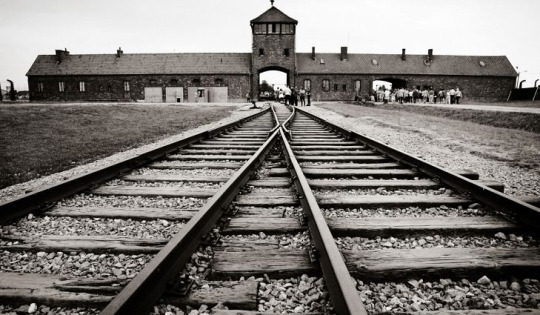
In April 1942, he was transported to Auschwitz, imprisoned in Auschwitz- Birkenau and given a tattoo of the number 32407 on his arm. He worked on constructing roofs, where he met some Russian prisoners who told him to keep his head down as the SS guards’ temper was quite unpredictable and the prisoners were disposable- so he did.
Within weeks of Lale’s arrival at the camp, he was stricken with typhus. He was taken care by a French academic named Pepan, who was also the man that gave him his identification tattoo the day of his arrival. Once Lale had recovered, Pepan introduced himself and asked him to be his assistant. Lale couldn’t understand how a person can be capable of mutilating someone’s body with a symbol representing so much hate, but in his circumstances, he had to take any job he was given as it wasn’t really a matter of choice but a matter of survival. He accepted the job but was haunted by it for the rest of his life, keeping it a secret until his 80’s.
Four weeks after being made Pepan’s assistant and learning the trade, Pepan disappeared. Lale was made the Tetoviere, the main tattooer, replacing Pepan. This wasn’t a job he wanted but it was a job he was lucky to have. His ability with languages was partly why he got it. Lale now worked for the Political Wing of the SS and was given a bag of tattooing supplies and a piece of paper used to identify his job position: Politische Abteilung, meaning political department. He was also assigned an officer to monitor him ostensibly gave him protection.

Almost consecutive numbers of people who stood in the same line in Auschwitz
His new position gave him some privileges: he has a single room, previously sharing a bed with thee men; he was given extra rations and when there were no more prisoners to tattoo or there weren’t any new ones coming that day, he would get free time.
In July 1942, he had to tattoo a group of new female arrivals. he found that particularly hard. He looked into the eyes of one of the women – something he had always avoided per advice of Pepan, who believed it helped not to look at their faces. Her number was 34902. He later found out her name was Gita (Gisel) and that she was in the women’s camp, Birkenau.
With the help of her SS guard and his appointed officer, Lale and Gita would exchange letters and eventually start meeting outside her block in secret. Gita had lost all hope of life outside of the camp, as well as her will to live. Lale trier to give her hope and take care of her. Despite everything he was somehow sure that one day thy would escape, that they would survive, despite seeing death all around him.
As he had extra rations, he gave them out to his former blockmates, to Gita and her friends, and to the Roma families that would later arrive into the camp. He also exchanged jewelry and money that had been given to him by people in the camp, sometimes from Gita and her friends as they worked in the department responsible for taking all valuable belongings of the arrivals into the camp and exchanged them for food and necessities with the villagers who worked near the camp. By doing this he got extra food and medicine for those most in need, and at one point saving Gita’s life by proving medicine on time.
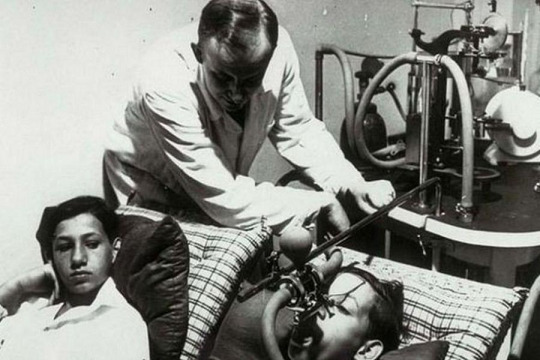
Through his job, he got to see Dr Josef Mengele selecting his ‘patients’ on who he would perform unnecessary surgery, inhumane experiments and amputations, most often resulting in death. He often told Lale: ‘one day, tetovierer, one day I will take you.’ Lale deeply resented Mengele, who would evade prosecution for his war crimes by escaping to South America, later dying of a stroke while swimming.
Eventually, Lale got caught trading jewels for contraband, he was interrogated and beaten. The man who had to torture him was actually a fellow prisoner, and one he knew. He wasn’t able to do it however Lale told him he has no choice. Although he was tortured for a very long time, he never gave up any of the names of people who had given him jewels, or the ones he traded with.
After he was let go, he went to find Gita. She thought he had been killed after he disappeared. He then promised her that one day they’ll get out, get married, have a happy life and that he will ‘fatten her up’ once they got out.
Just two days before the Russian army advanced on Auschwitz, Gita was selected to leave the death camp. In the 3 years she was in the camp, she kept her surname a secret from Lale, largely because of her lack of hope of getting out. It was said that once they get out, she would tell him her surname. She shouted out her surname to Lale as they took her away and that is when Lale got to know the name of the woman he was in love with – Gita Fuhrmannova. Lale was then taken to Mauthausen camp, which he later escaped and set out to find Gita, only knowing her name but not where she came from.
He discovered that his childhood home still belonged to his family and that his sister Goldie has survived.
Bratislava was the entry point for many survivors returning home to Czechoslovakia, so in a horse cart, Lale went there and waited for weeks at the railway station. The stationmaster then advised him to go to the Red Cross instead.
On his way there, a woman stepped into the street in front of his horse. Gita and Lale found each other.
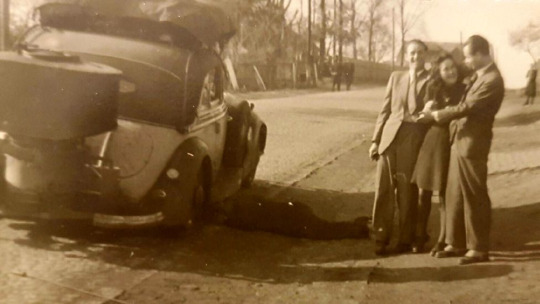
The couple got married, as promised by Lale, in October 1945 and changed their name to Sokolov to fit in better in the then Soviet- controlled Czechoslovakia. They had set up a successful textile shop and had been sending money over to support a movement for an Israeli state. Upon finding out, the government arrested and imprisoned Lale and nationalized their business.
Later they escaped from Czechoslovakia and went to Vienna, then Paris, and then set sail to Sydney as they wanted to get as far away from Europe as they could. On their way there, they met with a couple from Melbourne and decided to move there instead. In Melbourne they started a textile business again, Gita started designing dresses. Gita visited Europe a few times, but Lale never returned.
In 1961, they had a son who they named Gary.
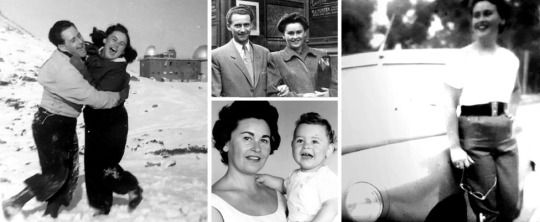
They never told the full extend of the horrors they went though but made him watch The World at War, a show they couldn’t watch.
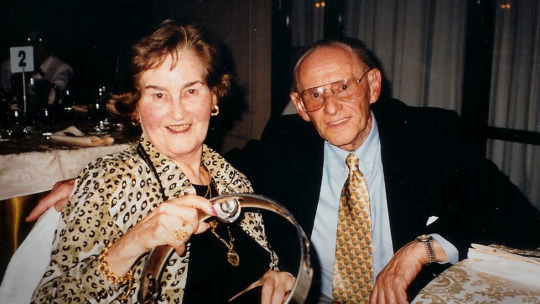
In 2003, following Gita’s death, Lele got in touch with Heather Morris with the aim to tell his story so it would never be repeated. He would tell her about his and Gita’s life and would piece everything together and combine it with her own research into the book The Tattooist of Auschwitz. The book became a best-seller.

#lalesolokov#gitafurman#gitafuhrmannova#theholocaust#drmengele#the tattooist of auschwitz#auschwitz#heather morris#holocaust survivor#history#historyblr#shortbio#short biography#holocaust rememberance day#27 january 2019#birkenau#concentrationcamp
3 notes
·
View notes
Text
Cinematography’s forgotten inventor

Louis Le Prince was a French artist who worked in the USA and in Leeds, England. His father was good friends with Louis Deguerra, the inventor of the daguerreotype. Daguerre would teach Louis chemistry and photography. After graduating from University, Louis moved to Leeds, where his friend John Whiteley offered him a job. He later married John’s sister, Elizabeth, and started The Leeds Technical School of Art with her.
Later he met with Eadweard Muybridge, who had used 24 separate cameras to capture a horse in motion. Louise spent years experimenting with ways to achieve that effect with a single lens camera.
In 1888, Louis invented the single lens motion camera nicknamed “mark one”. He applied for a patent but was denied. Making some changes, he developed the “mark two”, and was successful at getting a patent. He tested the camera on October the 4th 1888 in the garden of Elizabeth’s parents, making the film Roundhay Garden.

Le Prince then shot Leeds Bridge.

He was meant to showcase his work at the Morris- Jumel mansion in NYC in September 1890. Louis visited his brother in Dijon, France first.
On 13th September his brother went to the train with him as he departed on his way home go to Leeds before setting off to New York. This was the last time Louis Le Prince was ever seen. His disappearance remains a mystery today.
A few months after Louis’s disappearance Thomas Edison successfully patented an almost exact copy of Le Prince’s mark two camera.
#louis le prince#cinematography#firstfilm#252wordbiography#eadweardmuybridge#international creativity month#1888#history#historyblr#historicalfigures#biography#short biography#shortbio#thomasedison#(1)
45 notes
·
View notes